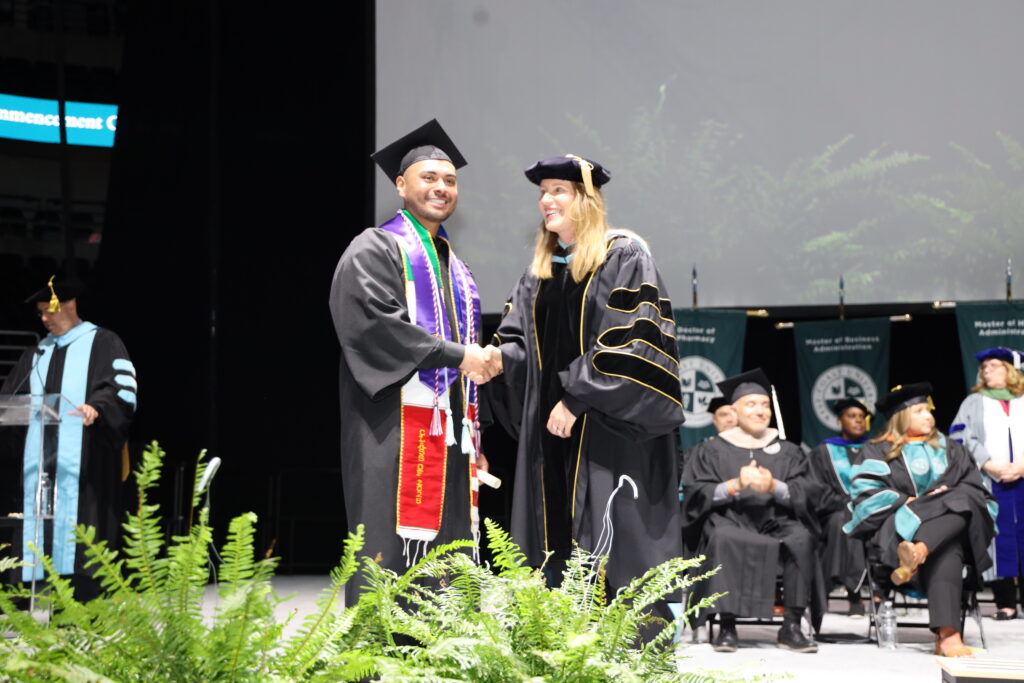At West Coast University, we are committed to staying ahead of the curve by incorporating innovation and creativity into everything we do from the development of our curriculum to the solutions we create to solve complex and challenging problems, as well as, preparing our students for the continually evolving workplace. When we set out to create a more a robust curriculum for our students we knew that we needed to incorporate technology for a new generation of learners. With that in mind, we looked for something that would give students a better understanding of the content and improve their overall experience in the classroom and visual learning experience. Augmented Reality (AR) became the most logical choice.
Augmented Reality motivates learning, allows students to become self-learners, explore and learn in different ways by visualizing hard to understand the content. The next generation of students can better relate to this new modality of student learning. Students can comprehend and retain the information which allows them to learn faster while improving their learning outcomes.
We chose to work with Microsoft and utilize their HoloLens hardware platform because they are leaders in AR technology development. The Microsoft Hololens provides a high-definition hologram of the human body on a platform that is simple to use, navigate, and provides us with a mobile solution. We selected Medivis, the developer of AnatomyX, to be our software solution because of their advanced software capabilities.
By leveraging AnatomyX and Microsoft HoloLens, we created an immersive Mixed Reality learning platform that both compliments and advances traditional anatomy curricula through the power of AR. This platform allows multiple students and professors to simultaneously explore 3D human anatomy in ways never before possible by leveraging recent breakthroughs in immersive computing.
As the first nursing school in the world to use the MS HoloLens platform in its curriculum, our students are now able to collaborate and visualize human anatomy using AR and artificial intelligence which provides the next level of understanding of the inner workings of the human body.
Over 400 students have successfully completed the Anatomy class using Augmented Reality technology. In the last term, we measured the pre-test to post-test efficacy of 150 students. The students demonstrated a 1-2 letter grade improvement after using AR to learn human systems. Students reported that the Augmented Reality technology was very instrumental in their learning. 92% of the students indicated that AR helped accomplish the objectives of the course and 95% reported their learning was enhanced. Additionally, we had a 20% decrease in the student failure rate.
Our team faced numerous challenges in implementing a cutting-edge technology from provisioning of hardware, storing the equipment, software updates, and deployment of software to the training of faculty and students. Despite all the challenges, we were able to complete implementation within six months. This technology is improving the student experience by providing an unparalleled learning experience that does not exist in any other nursing school which will make WCU nurses better prepared in their future workplace.
About the Author
Segar Annamalai is the Chief Information Officer at West Coast University. Segar received the 2018 Supernova Award in the category of Artificial Intelligence and Augmented Humanity and a recipient of the Top 100 CIO awards.
About West Coast University
WCU is a private institution focused on health care education. WCU offers both undergraduate and graduate health sciences degrees. WCU campuses are located in California, Texas and Florida. WCU now offers Online RN to BSN, RN to MSN and MSN. WCU strives to stay on the leading edge of the health care industry, preparing graduates for a career they love and meets the needs of the community.
WCU provides career guidance and assistance but cannot guarantee employment. The views and opinions expressed are those of the individuals and do not necessarily reflect the beliefs or position of the school or of any instructor or student.


